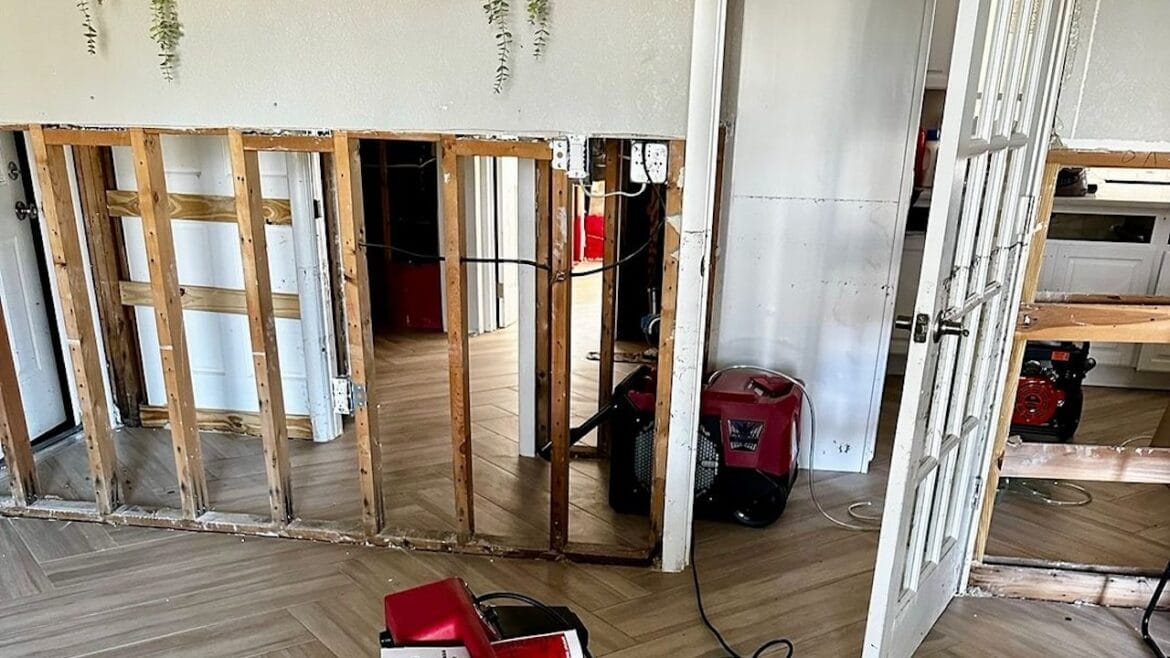A “flood cut” is a simple technique that removes damaged drywall from a home after flooding or a hurricane.
It is done to prevent mold growth, which will occur if water-damaged materials are left untreated. Wet drywall is also structurally unsound.
This helps ensure that any hidden moisture is eliminated and reduces the risk of mold spores developing in the walls.
How to do a flood cut
- Get some very basic tools—a utility knife or drywall saw, a straight-edge or level for marking a cut line, and a tape measure.
- Find the height of the water damage or wet drywall—it is usually quite visible, or ir easily found by touching and poking at the drywall at different heights.
- Go 12-24 inches above that height and mark as straight of a line as possible.
- Cut the drywall at that line—1-2 feet above the water-damaged section.
- Remove all of the drywall and insulation below the line you just cut. This is damaged and water-logged and it will grow mold. It’s also structurally unsound and unsalvageable.
- Take the cut drywall and any wet insulation out of your home.
Flood cuts are an easy and important part of restoring or rebuilding a safe and healthy home after a hurricane because mold can pose serious health risks, and because wet drywall is also structurally unsound.







